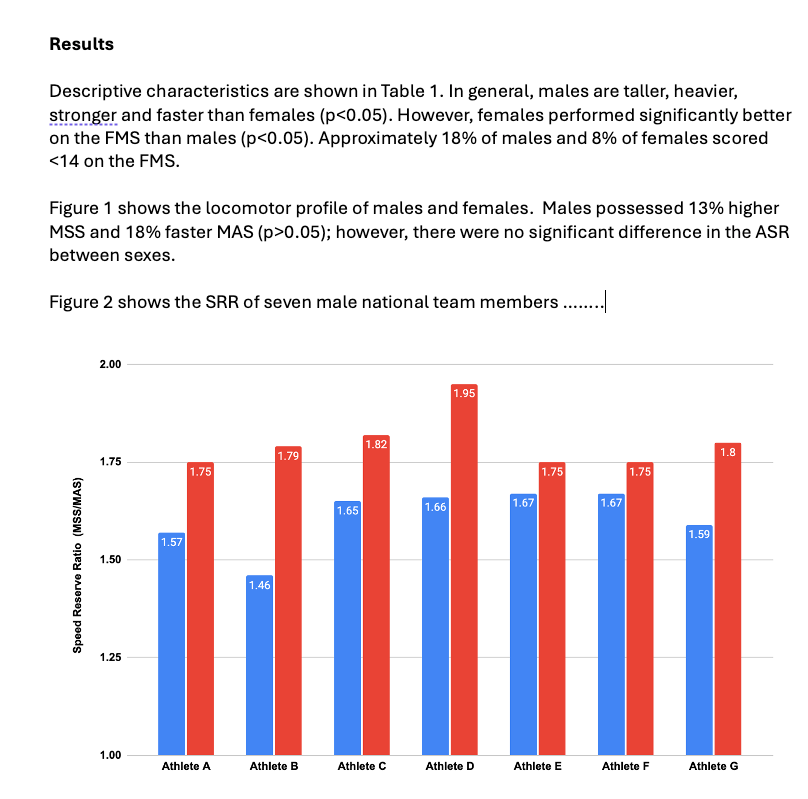You have a question, a hypothesis or purpose of the study or project.
You search and read the related literature and use it to provide background and an introduction that leads to the purpose of the study.
You write the “recipe book” or instructions on how to do the project. The Methods.
At this point, I hope that we could sit down for a cup of coffee and you could explain to me and have a conversation about the project.
We finish the cup-o-Joe and I say “I can’t wait to hear about the Results and what they mean.”
[Part 1 focusing on the above steps can be found here ]
Writing the Results Section
The statistical analysis has been conducted. You have the descriptive statistics of the sample and probably some inferential statistics (correlation, odds ratio, t-test, ANOVA, etc.) all sitting on the stats program output sheet.
My advice is to first create your tables and figures. A picture tells a thousand words (figure or graph), and data summarized in a table is telling. You might have some tables and figures like these below (Note: results from various papers)
Table 1. Physical characteristics of 13-15 yr old football players grouped by position.
Table 2. Significant predictors of performance and estimated R 2 in 13- to 15-year-old football players based on the multiple regression analyses.
Figure 1. Combined influence of body mass index (BMI) and aerobic fitness (FIT) on a composite cardio-metabolic risk factor score in young males.
Figure 2. Distribution of time spent in physical activity by intensity level during youth sport.
The next step is to lay these tables and figures out one-by-one in terms of how you would present the results. Typically, you will first present the descriptive statistics of the sample highlighting key aspects. Then you will move onto the other tables and figures that address the specific aims of the study.
The results section should only contain the results - no interpretation of the results; this is the focus of the Discussion.
Writing the Discussion
The Discussion will be the most difficult section of the paper/report to write. Overall, there are a few key aspects of the Discussion: 1) what are the key findings, 2) what do they mean - this is the interpretation of the findings, and 3) how do your results compare/contrast to other similar research.
You should be able to compare/contrast to the related research fairly simply if you have conducted a thorough lit review and made a summary table (see previous blog). It is the interpretation that gets a bit tricky. Couch your interpretation in the science of the topic. Now, there is some room for speculation ….but don’t over-extend your thinking. Be sure to have some supporting rationale and science to your speculation of what the findings might mean.
Make sure to address the limitations of the study. Remember, there is no perfect study. However, you also have a chance to also mention the strengths and uniqueness of your study (if applicable).
Finally, close out the Discussion with a summary and a conclusion.
Pro Tip
Find an original research paper (not a review paper or meta-analysis) most similar to your idea/project. Read it and see how they follow these guidelines provided above. Pay close attention to the writing, the rhythm of the paper, etc.
Let it Rest and Read Again with Fresh Eyes
We never get it just right the first time. That’s why we call it a first draft. However, there comes a time when you have written and re-read it so much it becomes blurry. At some time, you need to step away from the paper, let it rest for a period of time and then come back to it with fresh eyes.
When you are reading and editing it, make sure you are “telling the story” - that the paper has a good rhythm and is clear and concise. I also think that thinking in terms of the paper being a script for your Powerpoint presentation can work well. Think about making Powerpoint (or whatever presentation software) slides - 2-3 Intro slides that leads to the Purpose of the Study Slide…. then into the Methods and then Results slides with Tables and Figures and finally 2-3 slides that state Main Finding, how it relates to other studies (maybe recycled from Intro) and what you think it means with a final Conclusion slide.
I hope that this two-part series on Doing and Writing Research Projects has been helpful.







